Investigation of the Wear Performance of TiB2 Coated Cutting Tools during the Machining of Ti6Al4V Alloy
Abstract
1. Introduction
2. Experimental Procedures
2.1. Coating Deposition and Characterization Analyses
2.2. Experimental Setup and Tool Wear Analyses
3. Results and Discussions
3.1. Machining Performance Analysis
3.2. Coating Characterization
4. Conclusions
Author Contributions
Funding
Institutional Review Board Statement
Informed Consent Statement
Data Availability Statement
Acknowledgments
Conflicts of Interest
References
- Veiga, C.; Davim, J.P.; Loureiro, A.J.R. Proprties and Applications of Titanium Alloys. Rev. Adv. Mater. Sci. 2012, 32, 133–148. [Google Scholar]
- Chowdhury, M.; Chowdhury, S.; Yamamoto, K.; Beake, B.; Bose, B.; Elfizy, A.; Cavelli, D.; Dosbaeva, G.; Aramesh, M.; Fox-Rabinovich, G.; et al. Wear behaviour of coated carbide tools during machining of Ti6Al4V aerospace alloy associated with strong built up edge formation. Surf. Coatings Technol. 2017, 313, 319–327. [Google Scholar] [CrossRef]
- Paiva, J.M.; Shalaby, M.A.M.; Chowdhury, M.; Shuster, L.; Chertovskikh, S.; Covelli, D.; Junior, E.L.; Stolf, P.; Elfizy, A.; Bork, C.A.S.; et al. Tribological and Wear Performance of Carbide Tools with TiB2 PVD Coating under Varying Machining Conditions of TiAl6V4 Aerospace Alloy. Coatings 2017, 7, 187. [Google Scholar] [CrossRef]
- Dearnley, P.; Grearson, A. Evaluation of principal wear mechanisms of cemented carbides and ceramics used for machining titanium alloy IMI 318. Mater. Sci. Technol. 1986, 2, 47–58. [Google Scholar] [CrossRef]
- Boyer, R. An overview on the use of titanium in the aerospace industry. Mater. Sci. Eng. A 1996, 213, 103–114. [Google Scholar] [CrossRef]
- Armendia, M.; Garay, A.; Iriarte, L.-M.; Arrazola, P.J. Comparison of the machinabilities of Ti6Al4V and TIMETAL® 54M using uncoated WC–Co tools. J. Mater. Process. Technol. 2010, 210, 197–203. [Google Scholar] [CrossRef]
- Corduan, N.; Himbart, T.; Poulachon, G.; Dessoly, M.; Lambertin, M.; Vigneau, J.; Payoux, B. Wear Mechanisms of New Tool Materials for Ti-6AI-4V High Performance Machining. CIRP Ann. 2003, 52, 73–76. [Google Scholar] [CrossRef]
- Hartung, P.D.; Kramer, B.M. Tool Wear in Machining Titanium. Ann. CIRP 1982, 30, 75–80. [Google Scholar] [CrossRef]
- Biksa, A.; Yamamoto, K.; Dosbaeva, G.; Veldhuis, S.; Fox-Rabinovich, G.; Elfizy, A.; Wagg, T.; Shuster, L. Wear behavior of adaptive nano-multilayered AlTiN/MexN PVD coatings during machining of aerospace alloys. Tribol. Int. 2010, 43, 1491–1499. [Google Scholar] [CrossRef]
- M’Saoubi, R.; Axinte, D.; Soo, S.L.; Nobel, C.; Attia, H.; Kappmeyer, G.; Engin, S.; Sim, W.-M. High performance cutting of advanced aerospace alloys and composite materials. CIRP Ann. 2015, 64, 557–580. [Google Scholar] [CrossRef]
- Hatt, O.; Crawforth, P.; Jackson, M. On the mechanism of tool crater wear during titanium alloy machining. Wear 2017, 374-375, 15–20. [Google Scholar] [CrossRef]
- Wang, Z.M.; Ezugwu, E.O. Performance of PVD-Coated Carbide Tools When Machining Ti-6Al-4V©. Tribol. Trans. 1997, 40, 81–86. [Google Scholar] [CrossRef]
- Özel, T.; Sima, M.; Srivastava, A.; Kaftanoglu, B. Investigations on the effects of multi-layered coated inserts in machining Ti–6Al–4V alloy with experiments and finite element simulations. CIRP Ann. 2010, 59, 77–82. [Google Scholar] [CrossRef]
- Bouzakis, K.-D.; Michailidis, N.; Skordaris, G.; Bouzakis, E.; Biermann, D.; M’Saoubi, R. Cutting with coated tools: Coating technologies, characterization methods and performance optimization. CIRP Ann. 2012, 61, 703–723. [Google Scholar] [CrossRef]
- Cherukuri, R.; Molian, P. Lathe Turning of Titanium Using Pulsed Laser Deposited, Ultra-Hard Boride Coatings of Carbide Inserts. Mach. Sci. Technol. 2003, 7, 119–135. [Google Scholar] [CrossRef]
- Berger, M.; Hogmark, S. Evaluation of TiB2 coatings in sliding contact against aluminium. Surf. Coatings Technol. 2002, 149, 14–20. [Google Scholar] [CrossRef]
- Park, B.; Jung, D.-H.; Kim, H.; Yoo, K.-C.; Lee, J.-J.; Joo, J. Adhesion properties of TiB2 coatings on nitrided AISI H13 steel. Surf. Coatings Technol. 2005, 200, 726–729. [Google Scholar] [CrossRef]
- Silva, M.F.; Hancock, P.; Nicholls, J. Multilayer Coating Techniques to Optimise the Properties of TiB2-Based Coatings. Adv. Eng. Mater. 2000, 2, 666–671. [Google Scholar] [CrossRef]
- Berger, M.; Larsson, M.; Hogmark, S. Evaluation of magnetron-sputtered TiB2 intended for tribological applications. Surf. Coatings Technol. 2000, 124, 253–261. [Google Scholar] [CrossRef]
- Kelesoglu, E.; Mitterer, C. Structure and properties of TiB2 based coatings prepared by unbalanced DC magnetron sputtering. Surf. Coatings Technol. 1998, 98, 1483–1489. [Google Scholar] [CrossRef]
- Grancic, B.; Mikula, M.; Hruba, L.; Gregor, M.; Stefecka, M.; Csuba, A.; Dobročka, E.; Plecenik, A.; Kus, P. The influence of deposition parameters on TiB2 thin films prepared by DC magnetron sputtering. Vacuum 2005, 80, 174–177. [Google Scholar] [CrossRef]
- Fox-Rabinovich, G.S.; Gershman, I.; El Hakim, M.A.; Shalaby, M.A.; Krzanowski, J.E.; Veldhuis, S.C. Tribofilm Formation As a Result of Complex Interaction at the Tool/Chip Interface during Cutting. Lubricants 2014, 2, 113–123. [Google Scholar] [CrossRef]
- Chowdhury, M.; Bose, B.; Rawal, S.; Fox-Rabinovich, G.; Veldhuis, S. Investigation of the Wear Behavior of PVD Coated Carbide Tools during Ti6Al4V Machining with Intensive Built Up Edge Formation. Coatings 2021, 11, 266. [Google Scholar] [CrossRef]
- ISO 14577-4: 2016(E). Metallic Materials—Instrumented Indentation Test for Hardness and 746 Materials Parameters—Part 4: Test Method for Metallic and Non- Metallic Coatings; International Organization for Standardization: Geneva, Switzerland, 2016. [Google Scholar]
- ISO 28079: 2009 (E). Hardmetals—Palmqvist Toughness Test; International Organization for Standardization: Geneva, Switzerland, 2009. [Google Scholar]
- ISO 3685: 1993(E). Tool-Life Testing with Single-Point Turning Tools; International Organization for Standardization: Geneva, Switzerland, 1993. [Google Scholar]
- Shaw, M.C.; Cookson, J. Metal cutting principles. Tribol. Int. 1985, 18, 55. [Google Scholar] [CrossRef]
- Luo, Q.; Lewis, D.; Hovsepian, P.; Münz, W.-D. Transmission Electron Microscopy and X-ray Diffraction Investigation of the Microstructure of Nanoscale Multilayer TiAlN/VN Grown by Unbalanced Magnetron Deposition. J. Mater. Res. 2004, 19, 1093–1104. [Google Scholar] [CrossRef]
- Luo, Q.; Wang, S.C.; Zhou, Z.; Chen, L. Structure characterization and tribological study of magnetron sputtered nanocomposite nc-TiAlV(N,C)/a-C coatings. J. Mater. Chem. 2011, 21, 9746–9756. [Google Scholar] [CrossRef]
- Ganvir, A.; Joshi, S.; Markocsan, N.; Vassen, R. Tailoring columnar microstructure of axial suspension plasma sprayed TBCs for superior thermal shock performance. Mater. Des. 2018, 144, 192–208. [Google Scholar] [CrossRef]
- Fan, Z.; Wang, K.; Dong, X.; Duan, W.; Mei, X.; Wang, W.; Cui, J.; Lv, J. Influence of columnar grain microstructure on thermal shock resistance of laser re-melted ZrO2-7wt.% Y2O3 coatings and their failure mechanism. Surf. Coatings Technol. 2015, 277, 188–196. [Google Scholar] [CrossRef]
- Qiu, S.-Y.; Wu, C.-W.; Huang, C.-G.; Ma, Y.; Guo, H.-B. Microstructure Dependence of Effective Thermal Conductivity of EB-PVD TBCs. Materials 2021, 14, 1838. [Google Scholar] [CrossRef]
- Leyland, A.; Matthews, A. On the significance of the H/E ratio in wear control: A nanocomposite coating approach to optimised tribological behaviour. Wear 2000, 246, 1–11. [Google Scholar] [CrossRef]
- Beake, B.; Fox-Rabinovich, G. Progress in high temperature nanomechanical testing of coatings for optimising their performance in high speed machining. Surf. Coat. Technol. 2014, 255, 102–111. [Google Scholar] [CrossRef]
- Tsui, T.Y.; Pharr, G.M.; Oliver, W.C.; Bhatia, C.S.; White, R.L.; Anders, S.; Anders, A.; Brown, I.G. Nanoindentation and Nanoscratching of Hard Carbon Coatings for Magnetic Disks. MRS Proc. 1995, 383, 447–452. [Google Scholar] [CrossRef]
- Fox-Rabinovich, G.; Shuster, L.; Beake, B.; Veldhuis, S. Physical and Mechanical Properties to Characterize Tribological Compatibility of Heavily Loaded Tribosystems (HLTS). In Self-Organization during Friction: Advanced Surface-Engineered Materials and Systems Design; CRC Press, Taylor and Francis group: Boca Raton, FL, USA, 2006; pp. 121–147. [Google Scholar]
- Sato, K.; Ichimiya, N.; Kondo, A.; Tanaka, Y. Microstructure and mechanical properties of cathodic arc ion-plated (Al,Ti)N coatings. Surf. Coat. Technol. 2003, 163-164, 135–143. [Google Scholar] [CrossRef]
- Beake, B.; Fox-Rabinovich, G.; Veldhuis, S.; Goodes, S. Coating optimisation for high speed machining with advanced nanomechanical test methods. Surf. Coat. Technol. 2009, 203, 1919–1925. [Google Scholar] [CrossRef]
- Fox-Rabinovich, G.; Veldhuis, S.; Scvortsov, V.; Shuster, L.S.; Dosbaeva, G.; Migranov, M. Elastic and plastic work of indentation as a characteristic of wear behavior for cutting tools with nitride PVD coatings. Thin Solid Films 2004, 469-470, 505–512. [Google Scholar] [CrossRef]
- Zhang, X.; Beake, B.D.; Zhang, S. Toughness evaluation of hard coatings and thin films. In Thin Films and Coatings: Toughening and Toughness Characterization; CRC Press, Taylor and Francis Group: Boca Raton, FL, USA, 2015; p. 52. [Google Scholar]
- Zhang, S.; Zhang, X. Toughness evaluation of hard coatings and thin films. Thin Solid Films 2012, 520, 2375–2389. [Google Scholar] [CrossRef]
- Fox-Rabinovich, G.; Kovalev, A. Self-Organization and Structural Adaptation during Cutting and Stamping Operations. In Self-Organization during Friction: Advanced Surface-Engineered Materials and Systems Design; CRC Press, Taylor and Francis Group: Boca Raton, FL, USA, 2006. [Google Scholar]
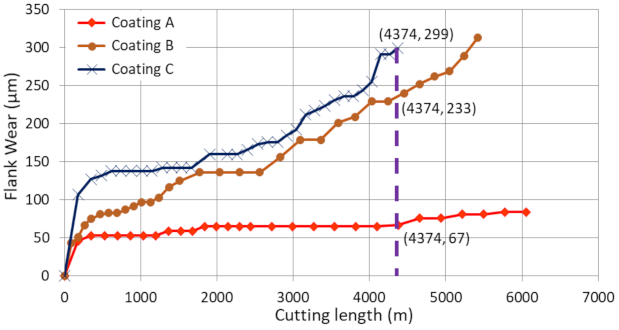
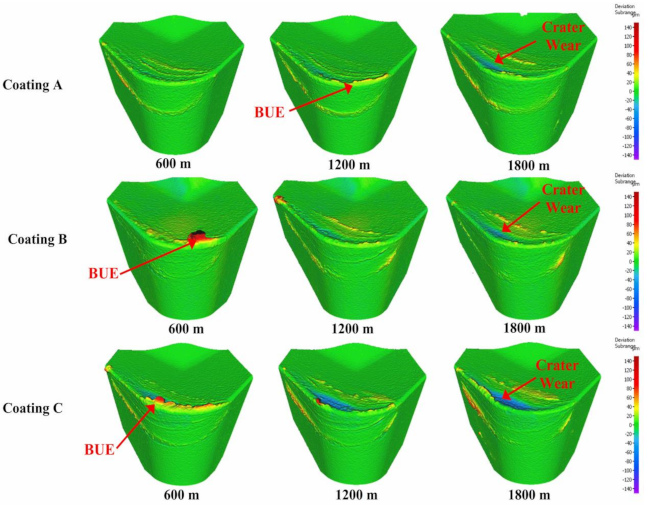
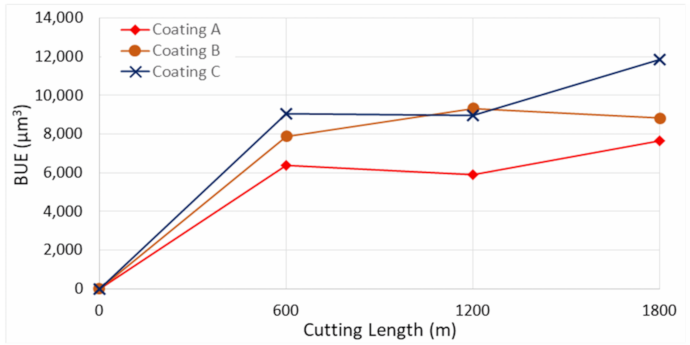

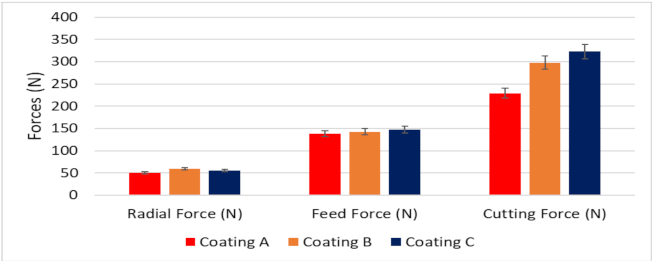

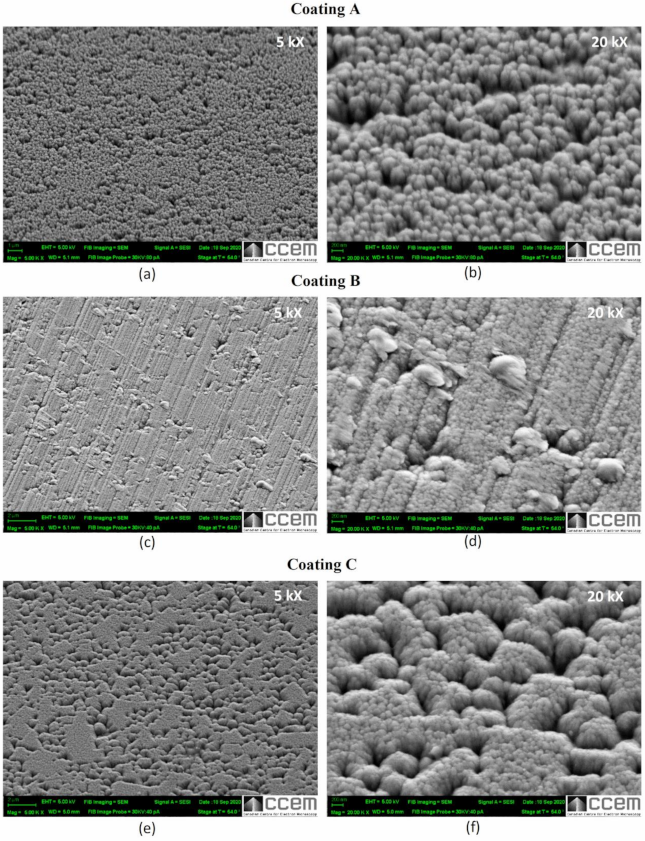
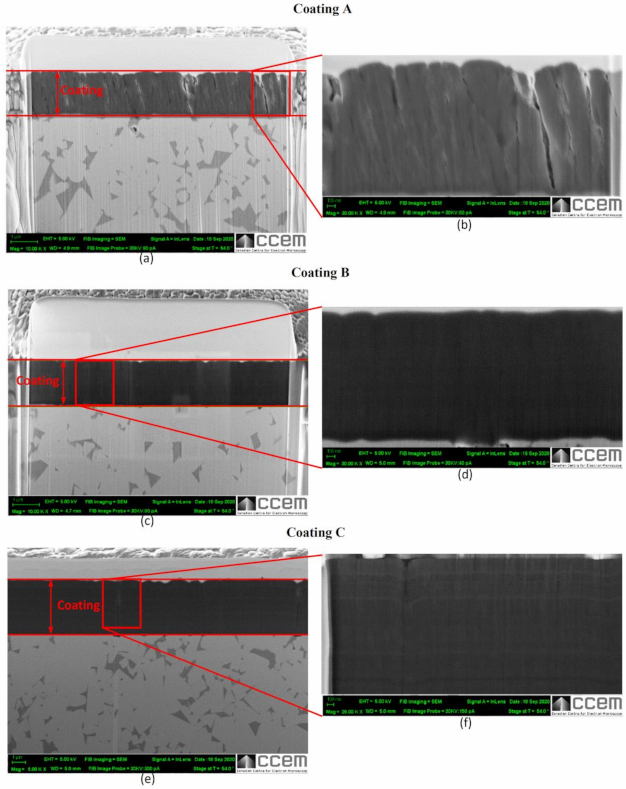
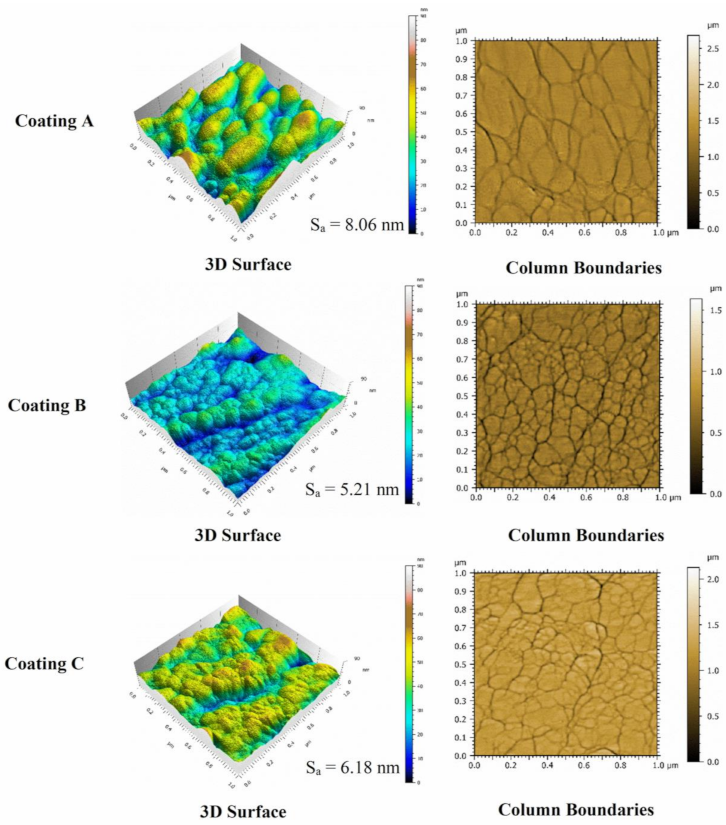
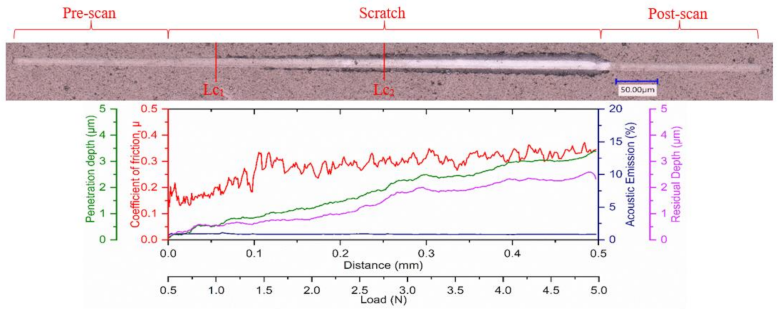
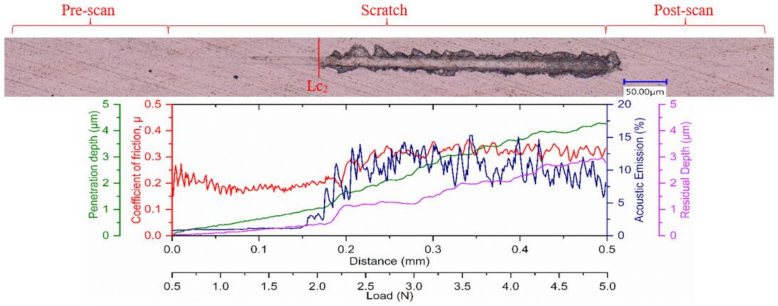
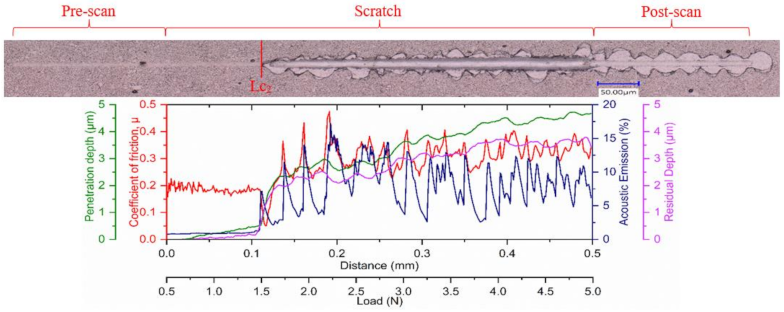
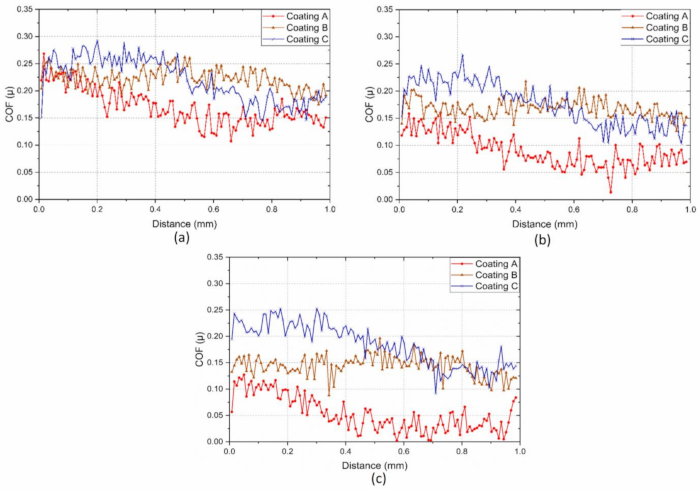
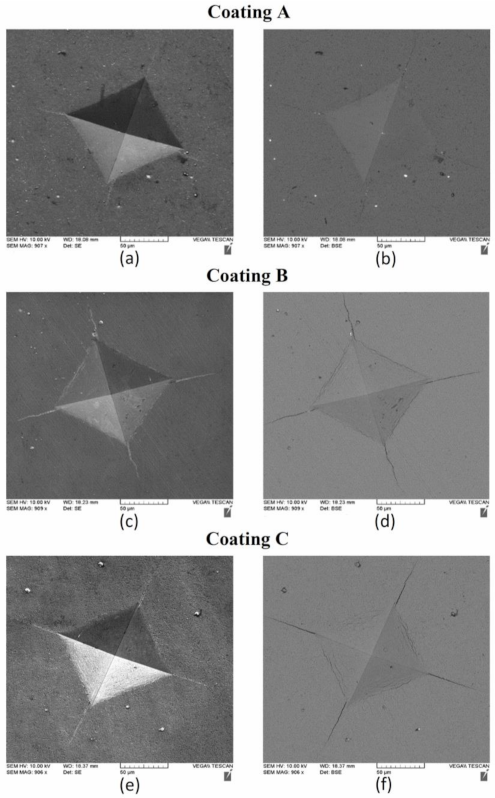
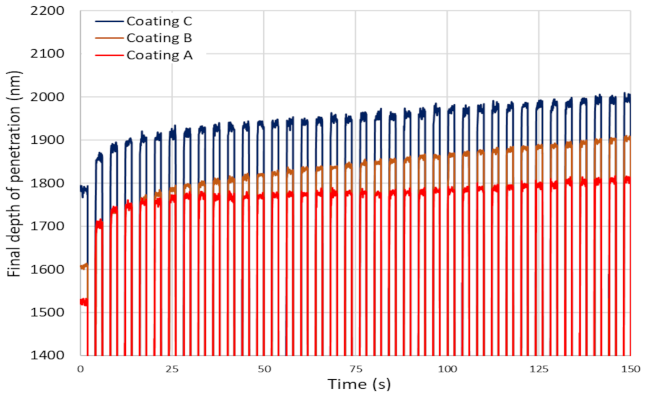

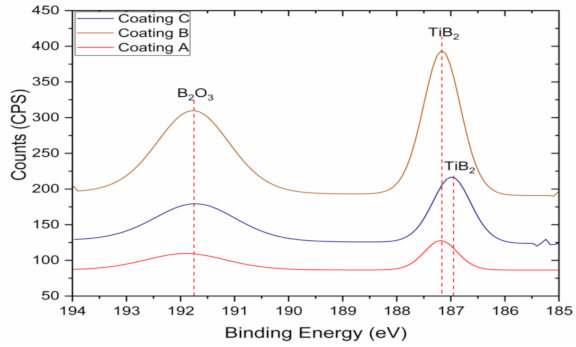
| Nomenclature | Coating A | Coating B | Coating C |
|---|---|---|---|
| Thickness, µm | 1.79 | 1.82 | 2.89 |
| Hardness (H), GPa | 9.49 ± 0.516 | 36.03 ± 2.156 | 34.18 ± 3.512 |
| Elastic Modulus (E), GPa | 413.51 ± 10.56 | 582.12 ± 11.50 | 581.14 ± 24.33 |
| Plasticity Index | 0.778 | 0.494 | 0.507 |
| H/E ratio | 0.023 | 0.062 | 0.059 |
| H3/E2 ratio | 0.005 | 0.138 | 0.118 |
| Cutting edge radius of coated tools, µm | 51.38 ± 3.17 | 49.77 ± 3.58 | 53.01 ± 5.20 |
| Modified Palmqvist Toughness, N/µm | 1.081 | 0.897 | 0.643 |
| Yield Stress, MPa | 4600 | 8007 | 7936 |
| Residual Stress, MPa | −633 ± 53 | −842 ± 79 | −930 ± 36 |
| Machining Operation | Cutting Tool Substrates | Workpiece Material | Workpiece Hardness, HRC | Cutting Speed, m/min | Feed, mm/rev | Depth of Cut, mm | Coolant Condition |
|---|---|---|---|---|---|---|---|
| Rough Turning | Kennametal CNMP432 Grade K 313 Turning inserts | ASTM B265 Grade 5 Ti6Al4V alloy | 37–38 | 45 | 0.15 | 2 | Flood coolant (Xtreme Cut 290) |
| Coating | Chip Compression Ratio—CCR | Φ—Shear Angle (°) | (ϒ) Shear Strain | Chip Sliding Velocity (m/min) |
|---|---|---|---|---|
| Coating A | 1.18 | 53.7 | 0.50 | 52.9 |
| Coating B | 1.03 | 49.6 | 0.63 | 46.5 |
| Coating C | 1.07 | 50.7 | 0.59 | 48.2 |
| Coating | LC1, N | LC2, N |
|---|---|---|
| Coating A | 1.00 | 2.75 |
| Coating B | - | 2.01 |
| Coating C | - | 1.50 |
| Coating | Binding Energy (eV) | Relative Atomic Percentage (%) |
|---|---|---|
| Coating A | 191.9 | 2.348 |
| Coating B | 191.8 | 4.56 |
| Coating C | 191.7 | 3.815 |
Publisher’s Note: MDPI stays neutral with regard to jurisdictional claims in published maps and institutional affiliations. |
© 2021 by the authors. Licensee MDPI, Basel, Switzerland. This article is an open access article distributed under the terms and conditions of the Creative Commons Attribution (CC BY) license (https://creativecommons.org/licenses/by/4.0/).
Share and Cite
Chowdhury, M.S.I.; Bose, B.; Fox-Rabinovich, G.; Veldhuis, S.C. Investigation of the Wear Performance of TiB2 Coated Cutting Tools during the Machining of Ti6Al4V Alloy. Materials 2021, 14, 2799. https://doi.org/10.3390/ma14112799
Chowdhury MSI, Bose B, Fox-Rabinovich G, Veldhuis SC. Investigation of the Wear Performance of TiB2 Coated Cutting Tools during the Machining of Ti6Al4V Alloy. Materials. 2021; 14(11):2799. https://doi.org/10.3390/ma14112799
Chicago/Turabian StyleChowdhury, Mohammad Shariful Islam, Bipasha Bose, German Fox-Rabinovich, and Stephen Clarence Veldhuis. 2021. "Investigation of the Wear Performance of TiB2 Coated Cutting Tools during the Machining of Ti6Al4V Alloy" Materials 14, no. 11: 2799. https://doi.org/10.3390/ma14112799
APA StyleChowdhury, M. S. I., Bose, B., Fox-Rabinovich, G., & Veldhuis, S. C. (2021). Investigation of the Wear Performance of TiB2 Coated Cutting Tools during the Machining of Ti6Al4V Alloy. Materials, 14(11), 2799. https://doi.org/10.3390/ma14112799







